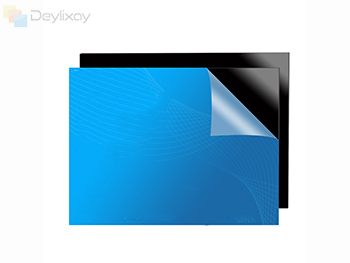Polyurethane (PU) ပစ္စည်းများသည်ယနေ့ရရှိနိုင်သည့်ကြာရှည်ခံမှု, ပြောင်းလွယ်ပြင်လွယ်နှင့်စွမ်းဆောင်ရည်နှင့်စွမ်းဆောင်ရည်နှင့်စွမ်းဆောင်ရည်နှင့်စွမ်းဆောင်ရည်နှင့်စွမ်းဆောင်ရည်နှင့်စွမ်းဆောင်ရည်နှင့်စွမ်းဆောင်ရည်ဆိုင်ရာဝိသေသလက္ခဏာများကိုပေါင်းစပ်ထားသည်။ Polyureane စာရွက်များနှင့်ချောင်းနှစ်ခုစလုံးသည်ထူးခြားသော application လိုအပ်ချက်များ, ဒီပြည့်စုံတဲ့လမ်းညွှန်ချက်ဟာဒီထူးခွားတဲ့ပစ္စည်းတွေရဲ့မတူကွဲပြားတဲ့ application တွေနဲ့အကျိုးကျေးဇူးတွေကိုစူးစမ်းလေ့လာတယ်။

Polyurethane ပစ္စည်းများနားလည်ခြင်း
ပစ္စည်းဖွဲ့စည်းမှုနှင့်ဂုဏ်သတ္တိများ
Polyurethane သည် urethane link များနှင့် ပူးပေါင်း. Orethane link များပါ 0 င်သော Oreticus Units များဖြင့်ဖွဲ့စည်းထားသောပိုလီမာတစ်ခုဖြစ်သည်။
ခြွင်းချက်ပလတ်စတစ်များနှင့်ရာဘာထက်သာလွန်သော)
ကျယ်ပြန့်ခိုင်မာတဲ့အကွာအဝေး (20 ကမ်းခြေကနေ 85 ကမ်းခြေ) မှ)
ထူးချွန်သော load-bearing စွမ်းရည်နှင့်မျက်ရည်ခံနိုင်ရည်
ဆီ, အတောများနှင့်အောက်စီဂျင်ကိုအလွန်အစွမ်းထက်တဲ့ခံနိုင်ရည်ရှိသည်
elasticity နှင့်မှတ်ဉာဏ်အပါအဝင်ကောင်းသောစက်မှုဂုဏ်သတ္တိများ
သတ်သတ်မှတ်မှတ်လျှောက်လွှာလိုအပ်ချက်များအတွက်စိတ်ကြိုက်ပြုလုပ်နိုင်သောဖော်မြူလာများ
ကုန်ထုတ်လုပ်မှုလုပ်ငန်းစဉ်
Casting: တသမတ်တည်းဂုဏ်သတ္တိများဖြင့်စာရွက်များနှင့်ချောင်းများကိုထုတ်လုပ်သည်
extrusion: ယူနီဖောင်း Cross-sections နှင့်အတူစဉ်ဆက်မပြတ်အရှည်ဖန်တီးသည်
compression မှို - အထူးသဏ်ဌာန်နှင့်ဖော်မြူလာများအတွက်
CNC စက် - စံစတော့ရှယ်ယာပုံစံများမှတိကျသောလုပ်ကြံမှု
Polyurethane စာရွက်များ၏စက်မှုအသုံးချ
ကုန်ထုတ်လုပ်မှုနှင့်စက်ယန္တရားများ
coniivor system အစိတ်အပိုင်းများ: ခါးပတ်, ကှနျးနှင့်သက်ရောက်မှုကုတင်
တုန်ခါမှုစိုစွတ်သော pads: ပစ္စည်းကိရိယာများခွဲထုတ်ခြင်းနှင့်ဆူညံသံလျှော့ချရေးပစ္စည်းများ
Wear strips များနှင့်လမ်းညွှန်များ - စက်ကိရိယာကာကွယ်မှု
gaskets နှင့်တံဆိပ်များ - စိတ်ကြိုက်တံဆိပ်ခတ်ဖြေရှင်းချက်များ
ပစ္စည်းကိုင်တွယ်
loading dock bumpers: သက်ရောက်မှုစုပ်ယူခြင်းနှင့်ကာကွယ်စောင့်ရှောက်ရေး
ကြေးကျင်းအကန့်များ: ပွန်းပဲ့ - ခံနိုင်ရည်ရှိသောပစ္စည်းစီးဆင်းမှုမျက်နှာပြင်များ
Hopper Liners: အမြောက်အများပစ္စည်းကိုင်တွယ်မှုအတွက်ကာကွယ်မှုကိုဝတ်ဆင်ပါ
SPROCTOCK CORTS: SAMBEROR စနစ်များအတွက်လုံခြုံမှုနှင့်ကာကွယ်မှု
မော်တော်ယာဉ်စက်မှုလုပ်ငန်း
ခန္ဓာကိုယ်ဆိုင်ကာကွယ်မှု - ယာယီဆေးသုတ်ကာကွယ်မှုရုပ်ရှင်
ဆူညံသံတုန်ခါမှု (NVH) အစိတ်အပိုင်းများ: dash elolators နှင့် Mounts
ရာသီဥတုအခြေအနေ: တံခါးနှင့်ပြတင်းပေါက်တံဆိပ်များ
ချုံများနှင့် Mounts: အင်ဂျင်နှင့်ဂီယာအစိတ်အပိုင်းများ
ဆောက်လုပ်ရေးနှင့်ဗိသုကာ
တိုးချဲ့ပူးတွဲဖြန့်ဖြူးခြင်း: တံတားနှင့်အဆောက်အ ဦး လှုပ်ရှားမှုအဆစ်
ခေါင်မိုးအမြှေးပါး - ရေစိုခံခြင်းနှင့်ကာကွယ်ခြင်းအလွှာများ
ဗိသုကာဆိုင်ရာ gaskets: ပြတင်းပေါက်နှင့်တံခါးကိုတံဆိပ်ခတ်စနစ်များ
ကြမ်းပြင်ကာကွယ်မှု - ယာယီဆောက်လုပ်ရေးလုပ်ငန်းခွင်ကာကွယ်မှု
Pu ချောင်းများ၏စက်မှု applicial
စက်မှုအစိတ်အပိုင်းများ
Builings နှင့်ဝက်ဝံများ - နိမ့်ကျသည့်ပွတ်တိုက်အစိတ်အပိုင်းများရွေ့လျားအစိတ်အပိုင်းများ
roller နှင့်ဘီး: ပစ္စည်းကိုင်တွယ်စက်ကိရိယာများ
တံဆိပ်များနှင့်အထုပ်များ - ဟိုက်ဒရောလစ်နှင့် pneumatic စနစ်များ
ဂီယာနှင့် Sprockets: Light-Duty ပါဝါဂီယာ
လျှပ်စစ်စက်မှုလုပ်ငန်း
cable လမ်းညွှန်များ: ဝါယာကြိုးနှင့်ကေဘယ်ကြိုးကာကွယ်စောင့်ရှောက်ရေး
insulating အစိတ်အပိုင်းများ: လျှပ်စစ်အထီးကျန် applications applications များ
Connector Seals: လျှပ်စစ်ဆက်သွယ်မှုများအတွက်သဘာဝပတ်ဝန်းကျင်ကာကွယ်စောင့်ရှောက်ရေး
Tool လက်ကိုင်များ - ကူးသန်းရောင်းဝယ်ရေးနှင့်သက်တောင့်သက်သာရှိသောကိုင်တွယ်ခြင်း
အစားအစာပြုပြင်ထုတ်လုပ်ခြင်း
FDA နှင့်လိုက်လျောညီထွေရှိသောအစိတ်အပိုင်းများ - သယ်ဆောင်ထားသောစနစ်အစိတ်အပိုင်းများ
ထုတ်ယူခြင်း roller: အစားအစာဆက်သွယ်ရန် applications များ
မျက်နှာပြင်ဖြတ်ခြင်းမျက်နှာပြင်: သန့်ရှင်းရေးဖြတ်တောက်ခြင်းဘုတ်အဖွဲ့များ
အဆို့ရှင်အစိတ်အပိုင်းများ: အစားအစာ - တန်းအရည်ကိုင်တွယ်
ရေကြောင်းလျှောက်လွှာ
Dock Fenders: ရေယာဉ်သက်ရောက်မှုကာကွယ်မှု
အဏ္ဏဝါ bearing: ရေအောက်ရွေ့လျားအစိတ်အပိုင်းများ
ပင်လယ်ရေဖျံများ - ဆားငန်ပတ်ဝန်းကျင်နှင့်လိုက်ဖက်ညီမှု
Deck အစိတ်အပိုင်းများ: Non-slip နှင့်အကြမ်းခံမျက်နှာပြင်များ
စက်မှုလုပ်ငန်းအားဖြင့်စွမ်းဆောင်ရည်အားသာချက်များ
ကုန်ထုတ်လုပ်မှုကဏ် sector အကျိုးခံစားခွင့်
လျှော့ချချအချိန်: ခြွင်းချက်ကောင်းသောဝတ်ဆင်ခုခံမှုသည်အစိတ်အပိုင်းကိုသက်တမ်းတိုးစေသည်
စွမ်းအင်ထိရောက်မှု - ပွတ်တိုက်မှုနိမ့်သည်စွမ်းအင်သုံးစွဲမှုကိုလျှော့ချသည်
ဆူညံသံလျှော့ချရေး: တုန်ခါမှုနှေးကွေးခြင်းလုပ်ငန်းခွင်ပတ် 0 န်းကျင်ကိုတိုးတက်စေသည်
ပြုပြင်ထိန်းသိမ်းမှုလျှော့ချရေး: သက်တမ်းရှည်သည်
မော်တော်ယာဉ်အားသာချက်များ
အလေးချိန်လျှော့ချခြင်း - သတ္တုအစိတ်အပိုင်းများထက်ပိုမိုပေါ့ပါးသည်
ချေးခံမှု - သံချေးနှင့်ဓာတုယုတ်ညံ့ခြင်းနှင့်ကင်းလွတ်ခြင်း
ဒီဇိုင်းပြောင်းလွယ်ပြင်လွယ်: ရှုပ်ထွေးသောပုံစံများသို့အလွယ်တကူပုံသွင်းသည်
ကုန်ကျစရိတ်ထိရောက်မှု - သတ္တုများနှင့်နှိုင်းယှဉ်လျှင်ထုတ်လုပ်မှုကုန်ကျစရိတ်ကိုလျှော့ချ
အစားအစာအပြောင်းအလဲနဲ့အကျိုးကျေးဇူးများ
သန့်ရှင်းရေးဂုဏ်သတ္တိများ
လိုက်နာမှု - FDA နှင့် USDA လိုအပ်ချက်များနှင့်တွေ့ဆုံသည်
ကြာရှည်ခံမှု: ထပ်ခါတလဲလဲသန့်ရှင်းရေးနှင့်ပိုးသတ်ခံရ
အရသာနှင့်အနံ့ကြားနေ - ထုတ်ကုန်အရည်အသွေးကိုထိခိုက်လိမ့်မည်မဟုတ်ပေ
အဏ္ဏဝါစက်မှုလုပ်ငန်းအားသာချက်များ
ဆားငန်ခံခြင်း - အဏ္ဏဝါပတ်ဝန်းကျင်တွင်အလွန်ကောင်းမွန်သောစွမ်းဆောင်ရည်
Buoyancy: သဘာဝ flotation ဝိသေသလက္ခဏာများ
ခရိုင်တည်ငြိမ်မှု - နေထိတွေ့မှုအတွက်ရနိုင်သောဖော်မြူလာများ
ပွန်းပဲ့မှုခံရခြင်း
နည်းပညာဆိုင်ရာသတ်မှတ်ချက်များ
ပစ္စည်းဂုဏ်သတ္တိများအကွာအဝေး
မာမာ - 20 ကမ်းခြေတစ် ဦး မှ 85 ကမ်းခြေ
ဆန့်တင်းမာမှု - PSI 8000 အထိ
Elongation: 650% အထိ
မျက်ရည်အစွမ်းသတ္တိ - PLI 600 အထိ
အပူချိန်အကွာအဝေး: -60 ° F မှ 250 ဒီဂရီဖာရင်ဟိုက် f မှ f ်ဌာန်းခြင်း (-51 ဒီဂရီစင်တီဂရိတ်မှ 121 ဒီဂရီစင်တီဂရိတ်)
အထူးဖော်မြူလာများ
ရေနံခံနိုင်ရည်အဆင့် - ဟိုက်ဒရောလစ်အက်ပလီကေးရှင်းများအတွက်
FDA နှင့်လိုက်လျောညီထွေ - အစားအစာနှင့်ဆေးဘက်ဆိုင်ရာအသုံးချပရိုဂရမ်များအတွက်
static-delipative: အီလက်ထရောနစ် application များအတွက်
Flame-retardant: ဘေးကင်းလုံခြုံရေး - ဝေဖန် applications များအတွက်
UV- တည်ငြိမ်မှု - ပြင်ပထိတွေ့မှုအတွက်
ဖန်တီးမှုနှင့်အပြောင်းအလဲနဲ့
စက်စွမ်းဆောင်ရည်
လှည့်ခြင်းနှင့်ကြိတ်ဆုံခြင်း - ချွန်ထက်သောကိရိယာများဖြင့်အလွန်ကောင်းမွန်သောစက်
တူးခြင်းနှင့်နှိပ်ခြင်း - ကောင်းသောချည်ထိန်းသိမ်းရေးဝိသေသလက္ခဏာများ
ဖြတ်တောက်ခြင်းနှင့်အချပ်: သင့်လျော်သောဓါးရွေးချယ်မှုနှင့်အတူစင်ကြယ်သောဖြတ်တောက်မှု
မျက်နှာပြင်ပြီးဆုံး: သတ်သတ်မှတ်မှတ်လိုအပ်ချက်များမှပွတ်နိုင်ပါတယ်
ဖွဲ့စည်းနည်းလမ်းများဖွဲ့စည်းခြင်း
Thermoforming: Thermoset သဘောသဘာဝကြောင့်ကန့်သတ်ခြင်းစွမ်းရည်
Bonding - Polyurethane ကော်နှင့်အတူအလွန်ကောင်းမွန်သောကော်
laminating: အခြားပစ္စည်းများနှင့်ပေါင်းစပ်နိုင်ပါတယ်
အပေါ်ယံပိုင်း - အခြားအလွှာများသို့အကာအကွယ်အလွှာများအဖြစ်အသုံးပြုသည်
ထည့်သွင်းစဉ်းစားထည့်သွင်းစဉ်းစား
ကိုင်တွယ်ခြင်းနှင့်သိုလှောင်မှု
အပူချိန်ထိန်းချုပ်မှု - အေးမြ။ ခြောက်သွေ့သောအခြေအနေများတွင်သိုလှောင်ထားပါ
UV ကာကွယ်မှု - တပ်ဆင်ခြင်းမပြုမီတိုက်ရိုက်နေရောင်ခြည်မှကာကွယ်ပါ
အစိုဓာတ်ရှောင်ခြင်း - အိမ်ခြံမြေပြောင်းလဲမှုများကိုကာကွယ်ရန်ခြောက်သွေ့အောင်ထားပါ
စင်ပေါ်ဘဝ - ပုံမှန်အားဖြင့်ပုံမှန်အားဖြင့်သိုလှောင်ထားသည့်အခါ 2-3 နှစ်
တပ်ဆင်မှုနည်းစနစ်များ
ကော်နှောင်ကြိုး - အကြံပြုထားသည့် Polyurethane Adhesives ကိုအသုံးပြုပါ
စက်မှုဆွဲဆောင်မှု: ပစ္စည်းချုံ့ဘို့ခွင့်ပြုပါ
အပူတိုးချဲ့မှု - ဒီဇိုင်းတွင်ချဲ့ထွင်ခြင်းဆိုင်ရာဝိသေသလက္ခဏာများကိုစဉ်းစားပါ
မျက်နှာပြင်အဘိတ်: သန့်ရှင်းရေးနှင့်မျက်နှာပြင်ကိုစနစ်တကျပြင်ဆင်ပါ
စက်မှုလုပ်ငန်း - တိကျတဲ့စံချိန်စံညွှန်းများ
အရည်အသွေးလက်မှတ်များ
FDA လိုက်နာမှု - 21 Cfr 177.1680 နှင့် 177.2600
USDA အတည်ပြုချက် - အစားအစာပြုပြင်ခြင်းလျှောက်လွှာများအတွက်
NSF စံသတ်မှတ်ချက်များ - ရေဆက်သွယ်ရန် applications များအတွက်
ul အသိအမှတ်ပြုမှု: လျှပ်စစ် applications များအတွက်
စစ်ရေးသတ်မှတ်ချက်များ - ကာကွယ်ရေး application များအတွက်
စမ်းသပ်မှု protocols
ပရောဂုတ်ခြင်းစစ်ဆေးခြင်း - ASTM D1044 နှင့် Din 53516
Hardness Testing: ASTM D2240
ဆန့စမ်းစစ်ဆေးခြင်း - ASTM D412
Compression Set: ASTM D395
အိုမင်းခြင်းစမ်းသပ်မှု - ASTM D573
ကုန်ကျစရိတ် - အကျိုးခံစားမှုခွဲခြမ်းစိတ်ဖြာ
စီးပွားရေးအားသာချက်များ
Long Service Life: အစားထိုးကြိမ်နှုန်းလျှော့ချ
Maintenance Savings: ကျချိန်နည်းပြီးပြုပြင်မွမ်းမံ
စွမ်းအင်ထိရောက်မှု - အောက်ပိုင်းလည်ပတ်မှုကုန်ကျစရိတ်
တပ်ဆင်ခြင်းစီးပွားရေး - သတ္တုအခြားရွေးချယ်စရာများထက်ပိုမိုလွယ်ကူစွာတပ်ဆင်ခြင်း
တန်ဖိုးစဉ်းစား
စွမ်းဆောင်ရည်ကိုက်ညီမှု - အချိန်ကြာလာတာနဲ့အမျှယုံကြည်စိတ်ချရသောစစ်ဆင်ရေး
စိတ်ကြိုက်အလားအလာ - တိကျသောလိုအပ်ချက်များအတွက်အံဝင်ခွင်ကျဖြစ်သောဖြေရှင်းနည်းများ
ပိုင်ဆိုင်မှုစုစုပေါင်းကုန်ကျစရိတ်: သာလွန်ရေရှည်တန်ဖိုး
ရင်းနှီးမြှုပ်နှံမှုအပေါ်သို့ပြန်သွားရန် - စွမ်းဆောင်ရည်အကျိုးခံစားခွင့်များမှတဆင့်အမြန်ငွေပေးချေခြင်း
ထွန်းသစ်စ application များ
စက်မှုလုပ်ငန်းအသစ်
ပြန်လည်ပြည့်ဖြိုးမြဲစွမ်းအင် - လေရဟတ်တာဘိုင်အစိတ်အပိုင်းများနှင့်နေရောင်ခြည်စွမ်းအင်သုံးတံဆိပ်များ
ဆေးဘက်ဆိုင်ရာပစ္စည်းကိရိယာများ - 0 င်ရောက်နိုင်သည့်ပစ္စည်းများနှင့်ဆေးဘက်ဆိုင်ရာပစ္စည်းကိရိယာများ
Aerospace: ပေါ့ပါးသောအစိတ်အပိုင်းများနှင့်တုန်ခါမှုအထီးကျန်ခြင်း
အီလက်ထရောနစ် - static control နှင့်အစိတ်အပိုင်းကာကွယ်မှု
နည်းပညာဆိုင်ရာတိုးတက်မှုများ
စမတ်ပစ္စည်းများ - မှတ်ဉာဏ်နှင့်မိမိကိုယ်ကိုကုသမှုဖော်ထုတ်ခြင်းပုံဖော်ခြင်း
ရေရှည်တည်တံ့ခိုင်မြဲသောရွေးချယ်စရာများ - ဇီဝအခြေစိုက် polyurethanes နှင့်ပြန်လည်အသုံးပြုနည်းပညာများ
တိုးမြှင့်ဂုဏ်သတ္တိများ: nano- အားဖြည့် composites
အဆင့်မြင့်ကုန်ထုတ်လုပ်မှု - 3D ပုံနှိပ်ခြင်းနှင့်အလိုအလျောက်ထုတ်လုပ်ခြင်း
ရွေးချယ်ရေးလမ်းညွှန်ချက်များ
ပစ္စည်းရွေးချယ်ရေးစံများ
Load လိုအပ်ချက်များ - Dynamic vs. Static Loading အခြေအနေများ
ပတ် 0 န်းကျင်ဆိုင်ရာထိတွေ့မှု - ဓာတုပစ္စည်းများ, အပူချိန်နှင့်ခရမ်းလွန်ရောင်ခြည်ထိတွေ့မှု
လှုပ်ရှားမှုဝိသေသလက္ခဏာများ - ပွန်းပဲ့ခြင်း, သက်ရောက်မှုနှင့်ပွတ်တိုက်အချက်များ
စည်းမျဉ်းစည်းကမ်းများလိုအပ်ချက်များ - စက်မှုလုပ်ငန်း - တိကျသောလိုက်နာမှုလိုအပ်ချက်များလိုအပ်သည်
လျှောက်လွှာ - တိကျသောအကြံပြုချက်များ
မြင့်မားသော 0 တ်ဆင်ထားသော application များ - ပိုမိုမြင့်မားသော DAROMETERARES ကိုရွေးချယ်ပါ
dynamic applications: အလွန်အစွမ်းထက်တဲ့မှတ်ဉာဏ်နှင့်အတူဖော်မြူရေးကိုရွေးချယ်ပါ
ဓာတုဗေဒထိတွေ့မှု - ခံနိုင်ရည်ရှိသောဖော်မြူလာများကိုသတ်မှတ်ပါ
အစားအစာအဆက်အသွယ် - FDA နှင့်လိုက်ဖက်သည့်ပစ္စည်းများလိုအပ်သည်
ပြုပြင်ထိန်းသိမ်းမှုနှင့်အသက်ရှည်
ဝန်ဆောင်မှုသက်တမ်း
စက်မှုအသုံးချပရိုဂရမ်များ - 0 န်ဆောင်မှုအခြေအနေများပေါ် မူတည်. 5-15 နှစ်
မော်တော်ယာဉ်အစိတ်အပိုင်းများ - အသုံးချပရိုဂရမ်များစွာတွင်ယာဉ်သက်တမ်း
အဏ္ဏဝါပတ် 0 န်းကျင်များ - သင့်လျော်သောရေးဆွဲခြင်းနှင့်အတူ 10-20 နှစ်
အစားအစာပြုပြင်ခြင်း - သင့်လျော်သောပြုပြင်ထိန်းသိမ်းမှုနှင့်အတူ 3-7 နှစ်
ပြုပြင်ထိန်းသိမ်းမှုအကောင်းဆုံးအလေ့အကျင့်
ပုံမှန်စစ်ဆေးခြင်း - 0 တ်ဆင်ခြင်းနှင့်ပျက်စီးခြင်းကိုစစ်ဆေးပါ
သင့်လျော်သောသန့်ရှင်းရေး - အကြံပြုထားသောသန့်ရှင်းရေးနည်းလမ်းများကိုအသုံးပြုပါ
အချိန်မီအစားထိုးခြင်း - ပျက်ကွက်ခြင်းမပြုမီအစားထိုးပါ
စာရွက်စာတမ်းများ - တပ်ဆင်ခြင်းနှင့်ပြုပြင်ထိန်းသိမ်းမှုမှတ်တမ်းများကိုထိန်းသိမ်းရန်
ကောက်ချက်
Polyurethane စာရွက်များနှင့်ချောင်းများသည်မရေမတွက်နိုင်သောစက်မှုလုပ်ငန်းအသုံးချမှုများတွင်မတူနိုင်သည့်ဘက်စုံသုံးနှင့်စွမ်းဆောင်ရည်ကိုပေးသည်။ သူတို့၏ထူးခြားသောရုပ်ပိုင်းဆိုင်ရာဂုဏ်သတ္တိများ, ဓာတုရောင်ရမ်းခြင်းနှင့်ကြာရှည်ခံမှုတို့ပေါင်းစပ်မှုသည်အခြားပစ္စည်းများပျက်ကွက်သည့်အသုံးချရန်တောင်းဆိုမှုများအတွက်သာလွန်ကောင်းမွန်သောရွေးချယ်မှုများကိုပြုလုပ်သည်။ ကုန်ထုတ်လုပ်မှုကြမ်းပြင်မှ Open Ocean မှ Open Procording Plants မှမော်တော်ကားတပ်ဆင်ခြင်းလိုင်းများအထိ Polyurethane အစိတ်အပိုင်းများသည်ယုံကြည်စိတ်ချရသောစွမ်းဆောင်ရည်နှင့်ထူးကဲသောစွမ်းဆောင်ရည်ကိုပေးသည်။
ကွဲပြားခြားနားသော Polyurethane formatulation များ၏သတ်သတ်မှတ်မှတ်စွမ်းရည်များနှင့်ကန့်သတ်ချက်များကိုနားလည်ခြင်းသည်လျှောက်လွှာတစ်ခုစီအတွက်အကောင်းဆုံးပစ္စည်းများကိုရွေးချယ်ရန်အင်ဂျင်နီယာများ, ဒီဇိုင်နာများနှင့်ပြုပြင်ထိန်းသိမ်းမှုပညာရှင်များကိုရွေးချယ်ရန်။ သဘာဝပတ်ဝန်းကျင်အခြေအနေများ, စက်ပစ္စည်းဆိုင်ရာလိုအပ်ချက်များကိုဖြည့်ဆည်းခြင်း,
နည်းပညာတိုးတက်လာခြင်းနှင့်ဖော်မြူလာအသစ်များပေါ်ထွက်လာသည်နှင့်အမျှ Polyurethane စာရွက်များနှင့်ချောင်းများအတွက်လျှောက်လွှာများဆက်လက်တိုးချဲ့လျက်ရှိသောစက်မှုလုပ်ငန်းအားလုံးတွင်ဆန်းသစ်တီထွင်မှုနှင့်စွမ်းဆောင်ရည်တိုးတက်မှုအတွက်ပင်ပိုမိုကောင်းမွန်သောအခွင့်အလမ်းများရရှိစေသည်။
 English
English Español
Español Portugues
Portugues Pусский
Pусский Français
Français Deutsch
Deutsch 日本語
日本語 한국어
한국어 العربية
العربية Italiano
Italiano Nederlands
Nederlands Ελληνικά
Ελληνικά Svenska
Svenska Polski
Polski ไทย
ไทย Türk dili
Türk dili हिन्दी
हिन्दी Indonesia
Indonesia Melayu
Melayu Tiếng Việt
Tiếng Việt dansk
dansk Magyar
Magyar қазақ
қазақ বাংলা
বাংলা עִברִית
עִברִית українська
українська norsk
norsk Gaeilge
Gaeilge Română
Română ພາສາລາວ
ພາສາລາວ Filipino
Filipino Suomalainen
Suomalainen slovenský
slovenský o'zbek
o'zbek Igbo
Igbo Hrvatski
Hrvatski Zulu South Africa
Zulu South Africa Afrikaans isiXhosa
Afrikaans isiXhosa lëtzebuergesch
lëtzebuergesch тоҷикӣ
тоҷикӣ नेपाल
नेपाल Eesti
Eesti Yoruba
Yoruba Монгол
Монгол ខ្មែរ
ខ្មែរ 中文(繁体)
中文(繁体) Afrikaans
Afrikaans












 တယ်လီဖုန်း
တယ်လီဖုန်း
မှတ်ချက်
(0)